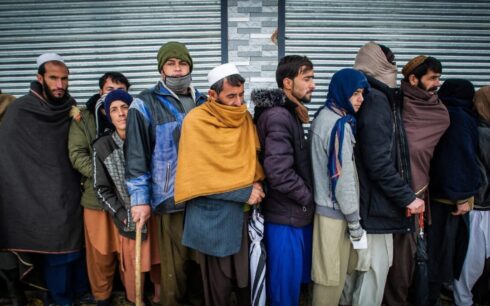KABUL — Despite modest signs of economic stabilization, Afghanistan remains mired in a deepening humanitarian and subsistence crisis, with 75 percent of the population unable to meet basic living needs, according to a new United Nations report.
The report, published by the United Nations Development Programme (UNDP) on April 30, outlines a bleak picture of Afghanistan’s fragile recovery. Although the country posted a modest 2.7 percent GDP growth in 2023–2024—the first positive economic signal since 2019—structural weaknesses, declining international aid and intensifying climate and economic shocks have significantly undercut gains.
“The growth is fragile and incomplete,” said Stephen Rodriques, UNDP’s Resident Representative in Afghanistan. “Afghan households remain trapped in a cycle of economic precarity, made worse by continued restrictions on women and climate-related disruptions.”
Household income and expenditure both declined in 2024, and subsistence insecurity rose by six percentage points over the previous year. Women-led households, rural communities and internally displaced persons were among the most affected. Nine in ten households reported cutting back on basic needs, with many reducing food intake and healthcare spending.
The report links Afghanistan’s worsening living conditions to several concurrent shocks: economic stagnation, reduced aid, political uncertainty, and the ongoing return of hundreds of thousands of Afghan migrants from Iran and Pakistan.
In 2024, economic shocks affected 90 percent of Afghan households—up from 65 percent a year earlier—while climate-related events such as droughts and floods added to the hardship. The trade deficit widened to $6.7 billion in the first nine months of 2024, underscoring the country’s dependence on imports and weak domestic production.
The report is especially stark on the condition of Afghan women. Only 7 percent of women are employed outside the home, compared to 84 percent of men, and restrictions on education and employment are pushing women into deeper poverty. Female-headed households experienced an 88 percent subsistence insecurity rate in 2024, a higher burden than their male counterparts.
“Women are locked into a downward spiral of dependence and exclusion,” the report notes, warning that ongoing restrictions could cost the economy nearly $920 million between 2024 and 2026.
Rural communities, where 71 percent of Afghans live, continue to experience more severe deprivation than urban areas, particularly in access to healthcare, heating fuel and sanitation. Regional disparities also worsened, with the northeastern and southern provinces showing the highest rates of subsistence insecurity.
The UNDP calls for urgent, targeted intervention. Among its key recommendations are restoring women’s rights, increasing investment in livelihoods and basic infrastructure, and expanding support for female-led enterprises. It also urges a pivot from short-term aid to long-term, sustainable economic development.
“This is a decisive moment,” Rodriques said. “Afghanistan’s recovery depends on inclusive growth and equal participation. Without these, millions will remain locked in crisis.”





